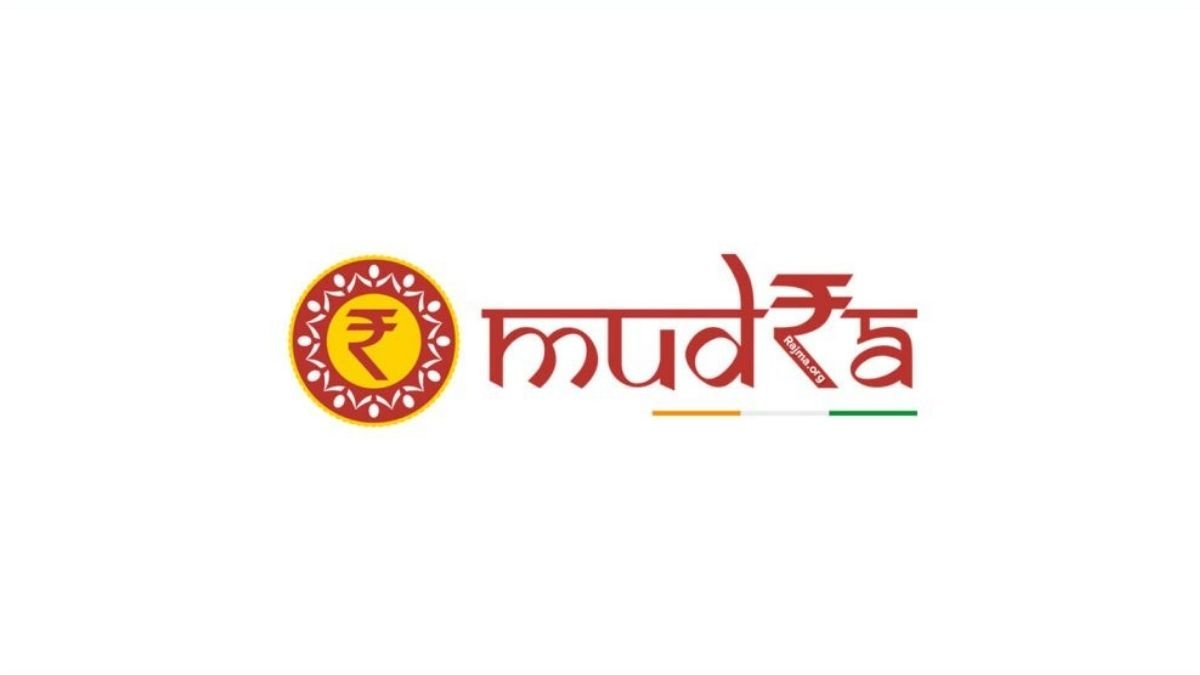Launched by Hon’ble Prime Minister of India on April 8, 2015, the Pradhan Mantri Mudra Yojana (PPMY) acts as a bumbershoot under which falls the Micro Units Development and Refinance Agency or MUDRA loans. The contribution of Micro, Small and Medium Enterprises (MSMEs) in the economic growth of India is undeniably of a humongous amount which significantly shells out the employment generations, export/ import, innovations and a lot more that can be summed up as a vast sector of the economy. By digging in a bit more into the numbers, one can find that these approximately 63.4 million MSMEs are accountable for:
- 45% of India’s industrial growth and production
- 40% of exports that is directly linked with GDP
- About 6.11% of manufacturing GDP
- 50% of GDP from several service activities
- About 33.4% of manufacturing output of India
- Employment to 120 million citizens of the country.
But unfortunately, in a country of 1391.99 million people, financial stability in these small, medium business sectors are often found to be fragile, wobbly and sometimes tottering. To maintain a stable growth and running it is both important for the ones operating them and the financial institutions and administrations of the country to take and provide external financial support like loans. This is the sole concern acting behind the initiative of PMMY of the NDA government, led by Prime Minister Narendra Modi.
Features of Mudra Loans
If we take rough figures and think alike, there are about 10 crore MSMEs and non-corporate units that feed about 50 crore people of the nation. This potent source of employment, economy, market and GDP growth needs a steady, affordable and reliable source of external financial support to bloom. Mudra Loans here come around with a bunch of facilities that fit the needs of all such enterprises irrespective of their sizes. With a corpus of about 20,000 crore, Mudra loans proffers loans that range up to 10 lakhs.
These loans are divided into three sectors depending on the status, growth and development, funding needs of the non-corporate and non-agricultural enterprises/ MSMEs:
- Shishu
- Kishore
- Tarun
| SECTOR | LOAN AMOUNT | PROCESSING FEE | WHO CAN APPLY? | LOAN SPECIFIC REQUIREMENTS |
| SHISHU | Up to Rs. 50,000 | nil | Freshers and entrepreneurs in lookout for start-ups, for starting newly formed businesses, or in the initial stages of their businesses. | A presentation of an intricately curated business plan along with application form and Mudra loan relevant documentations |
| KISHORE | From Rs. 50,001 to Rs. 5,00,000. | nil | Businesspersons and entrepreneurs looking for business/unit expansion | ● Sales and profit report before applying for loan in the same financial year
● Technical and economic viability of business report
|
| TARUN | From Rs. 5,00,001 to Rs. 10,00,000 | 5% | The third and final loan amount provided to relevant, eligible and established business owners/ entrepreneurs looking for any major expansion in pre-existing businesses. | ● Same as “Kishor”
● Minority certificates. |
Objectives of Mudra loans
The primary concern of Mudra Yojana is to organize a whole industry of MSMEs and NCSBS (Non-corporate Small Business Sector) that works separately and bring them down under the same umbrella that makes its operations way more convenient, fast and profitable. Here’s a list of all the objectives taken into account for the proper functioning of the PMMY:
- To provide an undivided growth to all sectors of small and medium scale businesses and help them grow further
- For reposing structured policy guidelines for MSMEs that helps to adapt corrective measures in the times of need and regulating the borrower-lender transaction stability by hammering out all-encompassing participation
- To extend finance and credit to Microfinance banks and institutions that spread the money by lending it to small business, traders and individuals who fall under the eligible criteria of the PMMY
- To create a rating scheme of MFIs by registering them and by imposing an accreditation system that helps borrowers to select and choose according to their best benefits.
- To lower the cost of finance to create easy access to finance and to assist lower income sectors to expand and/ or build their businesses.
- To flux the informal economy of the small and medium businesses into the formal sector of GDP and to monitor the growth of these sectors while generating employment avenues in them.
Every year, based on the requirements of the time, the objectives are chosen and varied. While the main objective is to help grow uniformly under an organized system, it is also of prime importance that a stable and updated system is maintained with the help of technology and such means that keeps an eye on all records.
Reach of PMMY
According to the official reports and releasing, PMMY loans as a whole reached an unexpurgated popularity and has aided millions.
- In the financial year of 2020-2021, the total number of loans sanctioned was 43370003 and the loan amount sanctioned was of a behemoth Rs. 279481.48 Crore while the amount disbursed was Rs. 264476.44 Crore.
- Prior to that in the financial year of 2019-2020 the total number of loans sanctioned reached up to a number of 62247606 and the loan amount sanctioned was of Rs. 337495.53 Crore while the amount disbursed was Rs. 329715.03 Crore.
- Peeking a bit more into the past, in the financial year of 2018-2019 the total number of loans sanctioned reached up to another record-breaking number of 59870318 and the loan amount sanctioned in total was of Rs. 321722.79 Crore while the amount disbursed was of Rs. 311811.38 Crore.
With the help of these aforementioned numbers and details, it’s quite easy to figure out the consistency of PMMY. Even amid a high-rising deadly virus outbreak (COVID-19) the potential of these loans remains undoubted.
Financial Schemes of Mudra Loans
The lack of a proper banking system for the micro, small and medium enterprises was an issue that required immediate addressal and it rightly got so with the help of PMMY. The loans are rolled out by the commercial banks, financial institutes, and small finance banks to reach the maximum of the potential entrepreneurs and business holders in the country.
These constitute:
- Small Finance Banks
- Private Sector Banks
- RRBCs
- NBFCs
- MFIs
Apart from the mainstream MSMEs, Mudra loans also look out for providing loans to the following sectors:
- Specific sector loans for agriculture allied non-farming pursuits
- Loans for Commercial Transport Vehicles
- Business Loans for service stratum pursuits
- Working Capital Loans
- Loans for agriculture and service allied commercial vehicles like tractors, tillers, etc.
To promote the Make in India campaign, Mudra Loans have specified units that facilitate all types of manufacturing items, a space for growth and healthy operation. Here’s an approximate list of the units that are eligible for availing Mudra Loans:
| Sectors | Units | |
| 1 | Food Sectors and Activities Loans | Preservation of agricultural products at rural standards, production of pickles and small-scale snacks along with canteen services, cold storages and chains, food stalls, ice, breads producing units |
| 2 | Textile Loans | Handloom, power loom, khadi works, embroidery and traditional hand works, zari, dyeing and printing. This also includes production of bags, furnishing, vehicle accessories. Knitting, stitching and works alike |
| 3 | Business Loans | Shopkeepers, traders, service enterprises |
| 4 | Transport Loans | Small load public transport vehicles, tractor trolleys, power tillers, commercial two-wheelers |
| 5 | Community, Social and Personal Services Loans | Salons, gyms, clothing essentials, vehicle repairing shops, DTP and photocopying facilities, medicine shops, courier services |
| 6 | Equipment Loans | Machinery equipment for micro units |
| 7 | Agriculture-allied non-corporate services Loans | Poultry, beekeeping, livestock-rearing, aggregation agro-industries, agricultural products processing services, fishery, dairy etc. |
Prime offers of Mudra Yojana are:
- Micro Credit Scheme (MCS)
- Mahila Uddyami Yojana
- Refinance Scheme for Mudra Banks, Regional Rural Banks (RRBS) and Scheduled Co-operative Banks
- Business Loans for non-corporate and non-agricultural Traders and Shopkeepers
- Missing Middle Credit Scheme
- Funds with Credit Guarantee
- Equipment Finance scheme for MSMEs and NCSBS
- Mudra Card
Eligibility Criteria for Mudra Loans
To ease the distribution of these loans to the masses, the borrowers have been categorized and segmented into three sectors under the PMMY as Shishu, Kishore, Tarun. Any business holder, enterprise, unit, individual falling under those sectors are eligible (new non-corporate, non-agricultural units as well as old and existing ones) to avail the loan to ensure a better business experience.
Requirements for Mudra Loans
Mudra Loans has a pretty straightforward and easy application procedure. Naturally, the documents required are also to the point and precise. Here’s a list of all the required documents, however, some may vary in banks:
- Duly filled submission of the application form
- Two passport sized photographs of the applicant (must match present appearance)
- Identity Proof (Aadhaar, Voter ID, Passport, Driving License)
- Address Proof (Aadhaar card, Voter ID, Passport, Electricity Bills, Ration Card)
- Age Proof (Matriculation Certificate, Birth Certificate)
- Business Registration Certificate
- Self-written Business Plan
- Equipment requirements with valid reasons
- Bank Statements of Past 6 months (by existing bank employee)
- Income Tax Refunds
- Sales, profits and expenditures charts of the past 2 years (signed by a registered chartered accountant)
- Minority Certificates (If applicable)
Interest rates, tenure and collaterals for Mudra Loans
To begin with, Mudra Loans are collateral-free, meant to help the ones in need. The tenure or the repayment period ranges from 3 to 5 years. As for the interest rates, here’s a list of the reputed and looked for financial institutes along with their individual interest rates as of 2021:
| Lending institutes | Interest rates | Repayment tenure |
| State Bank of India | 9.75% onwards | Up to 5 years |
| Corporation Bank | 9.90% onwards | Up to 7 years |
| Punjab National Bank | 9.60% onwards | Up to 5 years |
| Oriental Bank of Commerce | 8.15% onwards | Up to 5 years |
| Bank of Baroda | Strategic Premium + 9.65% onwards | Up to 5 years |
| Andhra Bank | 8.20 onwards | Up to 5 years |
| Bank of Maharashtra | 9.7% to 11.7% | Up to 5 years |
| Allahabad Bank | 9.7% to 11.7% | Up to 5 years |
| HDFC Bank | Depends on Business Profile | Up to 5 years |
| ICICI Bank | Depends on Business Profile | Up to 5 years |
| Bank of India | Linked to MCLR | Up to 7 years |
| IDBI Bank | Linked to Bank’s Base Rate | Up to 5 years |
| UCO Bank | 8.85% onwards | Lender’s Discretion |
However, note the interest rates and the extra charges levied upon them are subject to change, and depend on the discretion of the lender and RBI. Credit scores and other such parameters are also to be taken into account for calculating Interest Rates.
How to Apply for Mudra Loans? (Online and Offline)
Once the applicant has come in terms with the loan details and the necessities for the loan, they need to make a proper plan of the new business (it’s sector, growth, capacity, scope etc.) or chart out the requirements (machinery, equipment, expansion etc.) for old and existing businesses and can continue further.
Keeping in mind the vast usage of the loans, the application process has been kept rather simple, for everyone’s sake.
For online application, the applicant will need to visit the official website of PMMY, https://udyamimitra.in/ . This can also be done by visiting the desired bank’s website.
After choosing the right options, one will be moved further to fill out the necessary details and register themselves. Only after registration will the applicant be allowed to apply for the loan. After the submission, the application will be reviewed by lenders (based on credit scores, business scope, requirement etc.). Then the borrower/ applicant will be able to choose from the lenders accordingly.
For Offline application, the applicant will need to visit their preferred lending institution and submit a self-written business plan, requirement. Along with it, the applicant will have to fill the application form, duly sign and submit with the required documents attached. It is then up to the bank to verify and approve the loan. After approval, the amount shall be added to the borrower’s account directly.
Why choose Mudra Loans?
Mudra loans are the safest and most reassuring banking solutions in terms of MSMEs and NCSBS. By far, Mudra Loans has partnered with a number of financial institutes which include:
- 15 co-operative banks
- 25 microfinance institutes/ providers
- 35 NBFCs
- 47NBFC-MFI
- 18 private sector banks
- 21 public sector banks
- 6 small finance banks
- 36 RRBs
- 25 non-banking financial institutions
The lack of proper institutional finance for small businesses was not regional or in a few areas but in the whole country. The Mudra Loans acting under Pradhan Mantri Mudra Yojana altogether changed the whole perception of loaning and banking. It also cannot be overlooked that these industries, running separately on their own, suffering without support has been slowly, with each passing year, brought together under one roof and organized for more productivity and less hassle.
Loans are meant to be repaid, but when it comes to that, it often defies the concept of cost-effectivity. Every loan has been made to fit different case scenarios and Mudra Loans have been made specifically keeping in mind the small businesses and it’s requirements. This allows the borrowers in the rural and semi-urban areas to be actually beneficial as they get the facilities of Extended Credit, comparatively less interest rates and a space to grow healthily.




